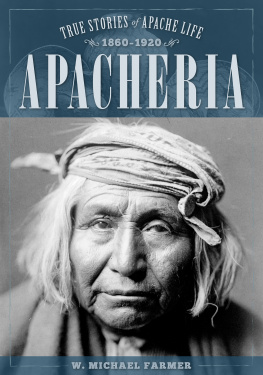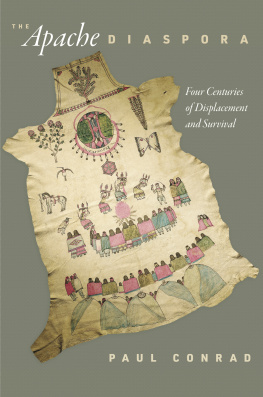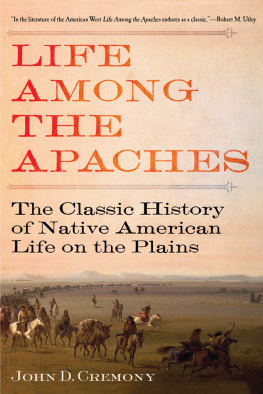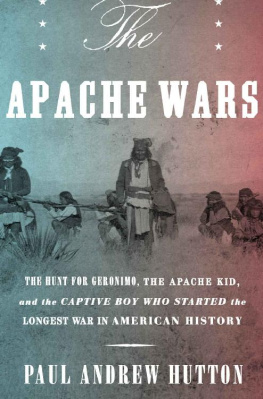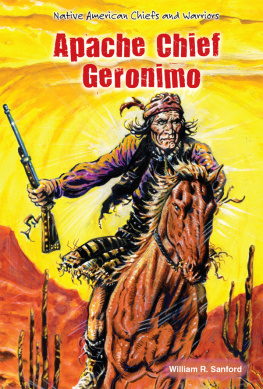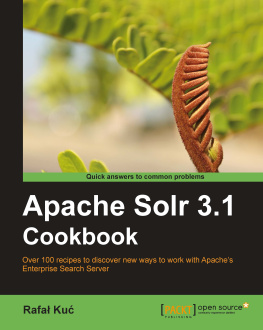
Published in 2016 by The Rosen Publishing Group, Inc.
29 East 21st Street, New York, NY 10010
Copyright 2016 by The Rosen Publishing Group, Inc.
All rights reserved. No part of this book may be reproduced in any form without permission in writing from the publisher, except by a reviewer.
First Edition
Editor: Karolena Bielecki
Book Design: Kris Everson
Reviewed by: Robert J. Conley, Former Sequoyah Distinguished Professor at Western
Carolina University and Director of Native American Studies at Morningside College and Montana State University
Supplemental material reviewed by: Donald A. Grinde, Jr., Professor of Transnational/American Studies at the State University of New York at Buffalo.
Photo Credits: .
Library of Congress Cataloging-in-Publication Data
Richmond, Wren.
Apache / Wren Richmond.
pages cm. (Spotlight on Native Americans)
Includes bibliographical references and index.
ISBN 978-1-4994-1666-4 (pbk.)
ISBN 978-1-4994-1665-7 (6 pack)
ISBN 978-1-4994-1668-8 (library binding)
1. Apache IndiansHistoryJuvenile literature. 2. Apache IndiansSocial life and customsJuvenile literature. I. Title.
E99.A6R43 2016
979.0049725dc23
2015007806
Manufactured in the United States of America
CPSIA Compliance Information: Batch #WS15PK: For Further Information contact Rosen Publishing, New York, New York at 1-800-237-9932
CONTENTS
APACHE HOMELANDS
CHAPTER 1
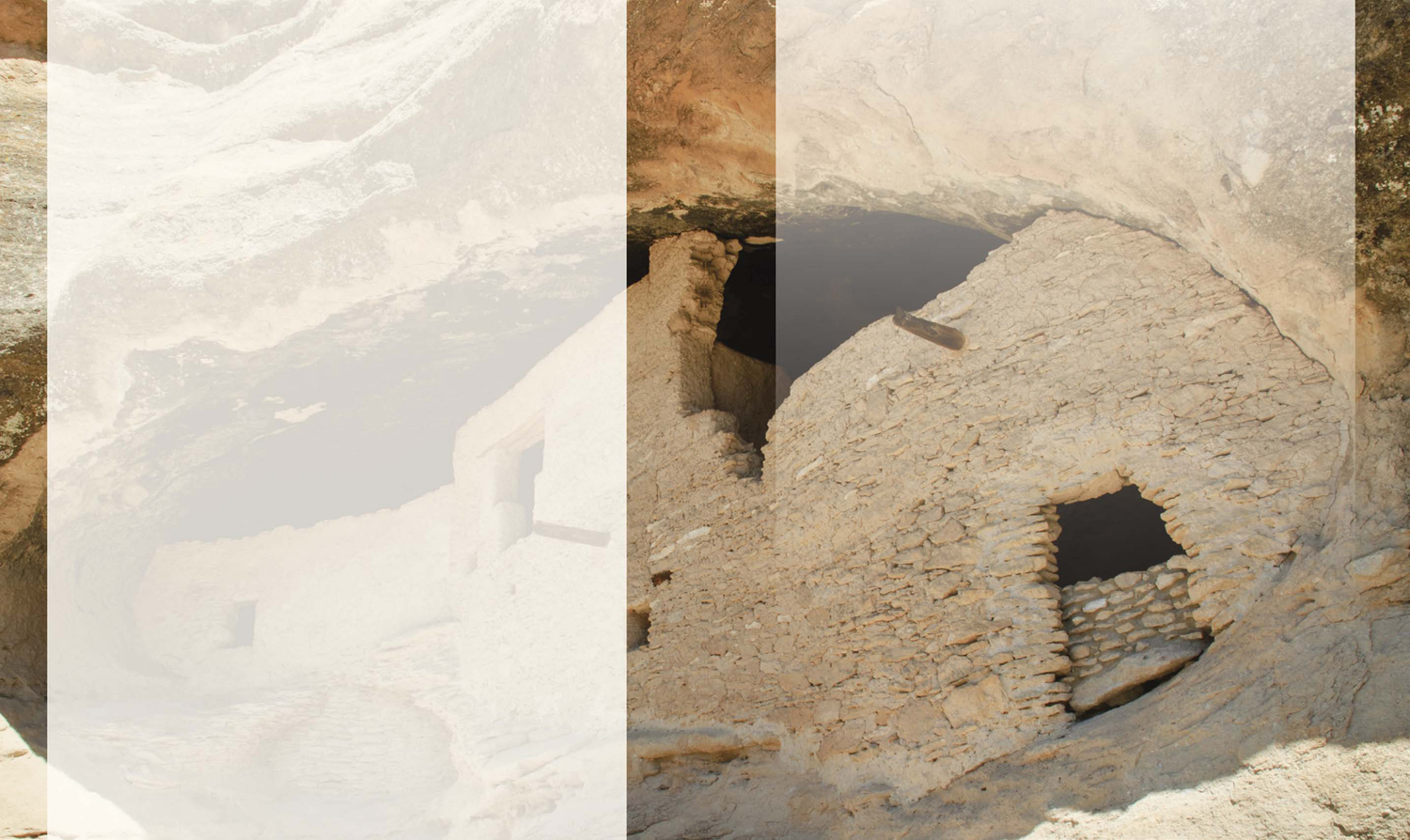
In New Mexico, Apaches occupied land that had been abandoned by the ancient Mogollon people, such as these ruins at Gila Cliff Dwellings National Monument.
The Apaches are a North American native people whose historic homeland included a large portion of todays U.S. Southwest and northern Mexico. Today, tens of thousands of Apaches live in the United States, mostly in Oklahoma, New Mexico, and Arizona.
It is uncertain how the Apaches and other Native Americans got to North America. In most native for Apache culture.
Most scholars believe Apaches migrated from the north, arriving in the Southwest region of todays Arizona and New Mexico perhaps as early as AD 800 or 900. Others think the Apaches might have arrived in the Southwest after the great region, including a people called the Mogollon, to abandon the area and move their farming villages near big rivers. The Apaches would have moved in and replaced them.
BEFORE EUROPEAN CONTACT
CHAPTER 2
Before the Spanish began exploring the Southwest in the 1540s, the Eastern Apaches were the lords of the southern Great Plains, with its large herds of buffalo. Mainly a trading people, the Plains Apaches held large annual trade fairs with the Pueblo Indians of New Mexico at the eastern edge of the Great Plains. For several weeks each fall, Apaches from all across the southern Plains traded their buffalo meat and hides to the Pueblos in exchange for corn and pottery.
For the Western Apaches, however, west of the Rio Grande, there were no buffalo herds, only a rugged, desert wasteland that no one else wanted. Here, the Apaches proved themselves one of the most adaptable people in the world. They discovered and harvested the few food plants of the landscape. With so little food, the Apaches spread thinly across the land, living in small, independent units of related families.
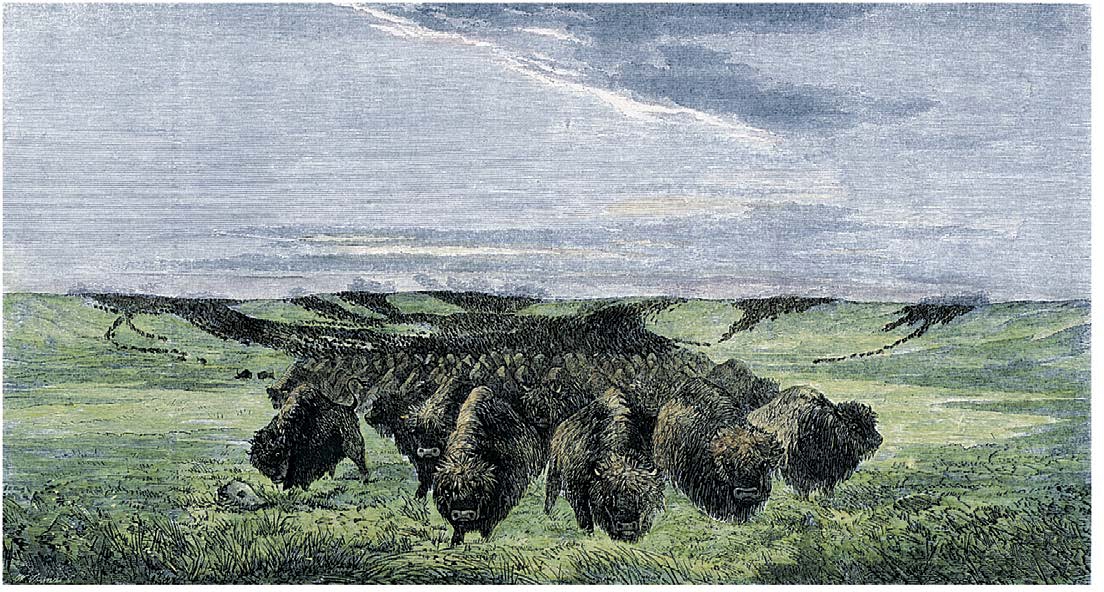
It has been estimated that there were once more than 70 million buffalo on the Great Plains. The buffalo provided for many of the Plains Apaches needs.
Neither the Eastern nor the Western Apaches formed any kind of national government that other nations could do business with. This situation made it impossible for the Spanish, Mexicans, and Americans who later came to the region to enter into treaties with the whole Apache Nation.
THE SPANISH AND MEXICAN ERAS
CHAPTER 3
Beginning with Francisco de Coronado in the 1540s, Spanish explorers in the sixteenth century left accounts of the annual Apache trade fairs with the Pueblo Indians. When the Spanish settled New Mexico in 1598, however, they imposed taxes on the Pueblos that left them without anything to trade with the Apaches. The annual Apache trade fairs came to an end, forever changing the of the Plains Apaches.
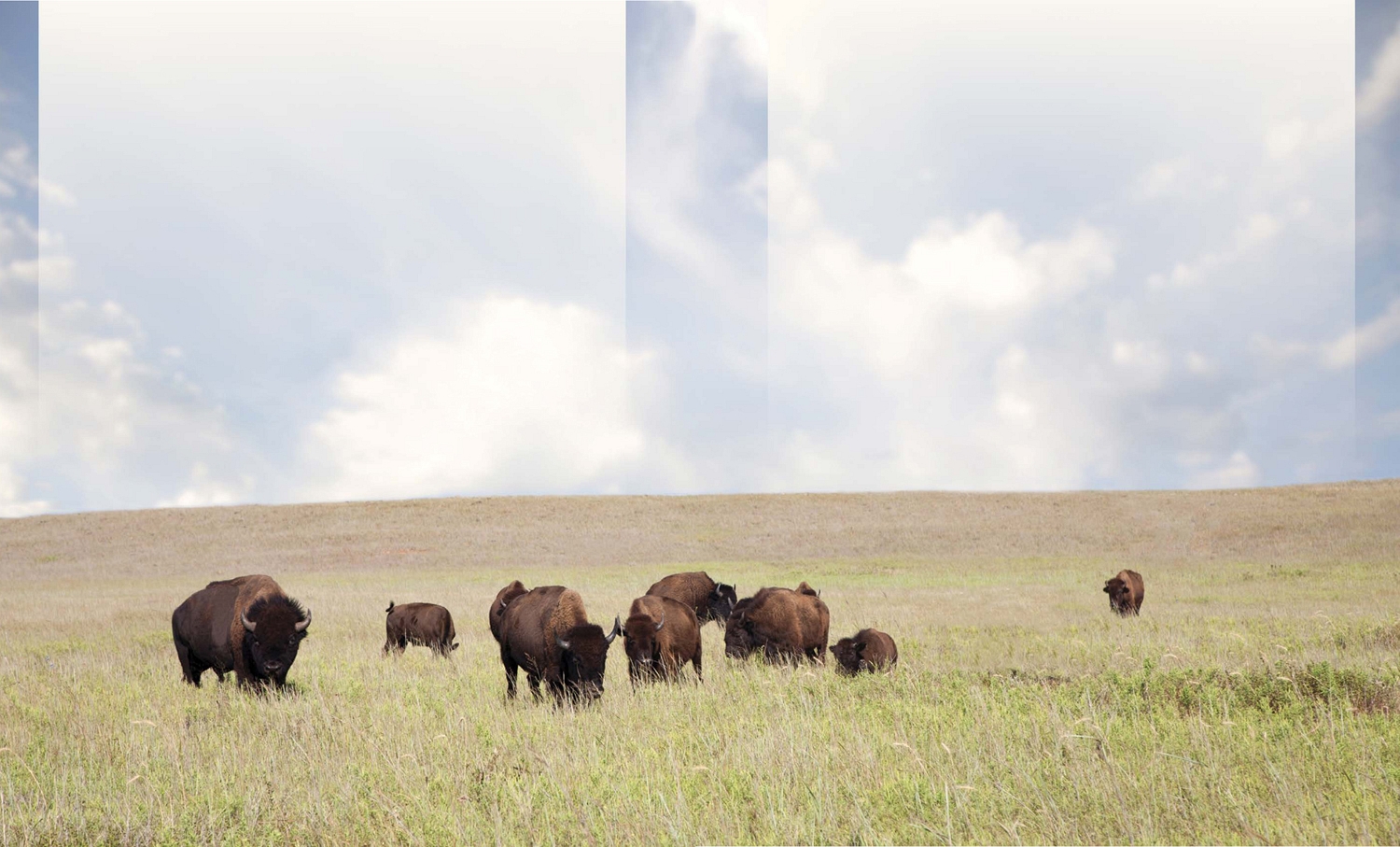
The once-abundant herds of buffalo that roamed the Great Plains were important to the Apaches.
with the Kiowa tribe on the Great Plains.
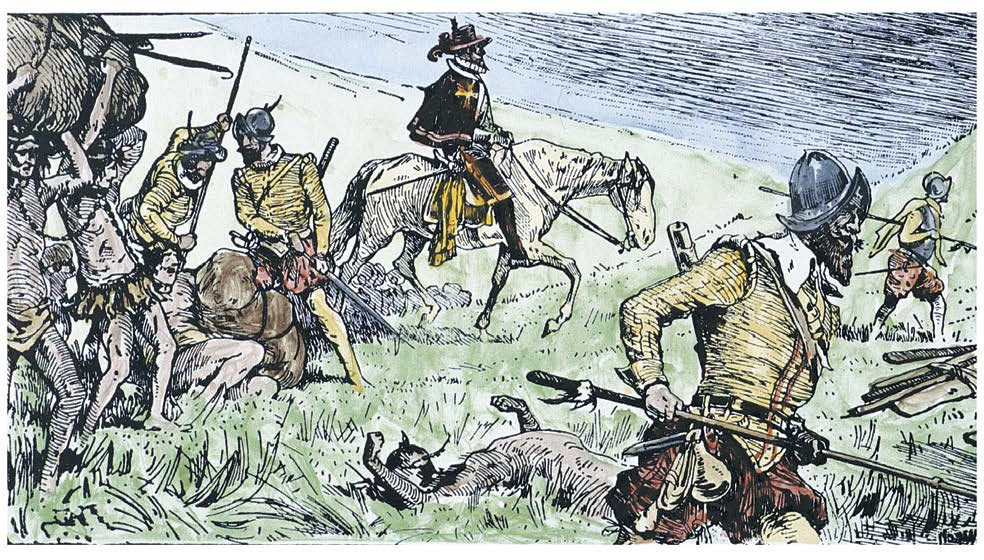
When the Spanish entered the Southwest, they forced the Indians to work for them.
APACHE RAIDS
CHAPTER 4
Indian tribes were forced to adapt dramatically to their new European-American neighbors. The Apaches shifted their economy from buffalo hunting to raiding Spanish ranches. Apaches became so successful at it that the Spanish in northern Mexico complained that they worked all year raising livestock, and suddenly, the Apaches would sweep down from the north and steal them.
Apache raids sometimes occurred hundreds of miles into Mexico. The raiders often went on foot to their target, traveling through the most rugged, isolated , avoiding contact with anyone and maintaining the element of surprise.
Striking quickly, the Apaches moved the stolen animals northward at an amazing pace. If the pursuers got too close, some of the Apaches laid ambushes for them, while others continued herding the livestock northward. Once in their home territory, they divided up the livestock and then scattered in small groups. This made pursuing them farther nearly impossible. Apache raiding virtually halted the advance of Spanish settlement northward from Mexico.
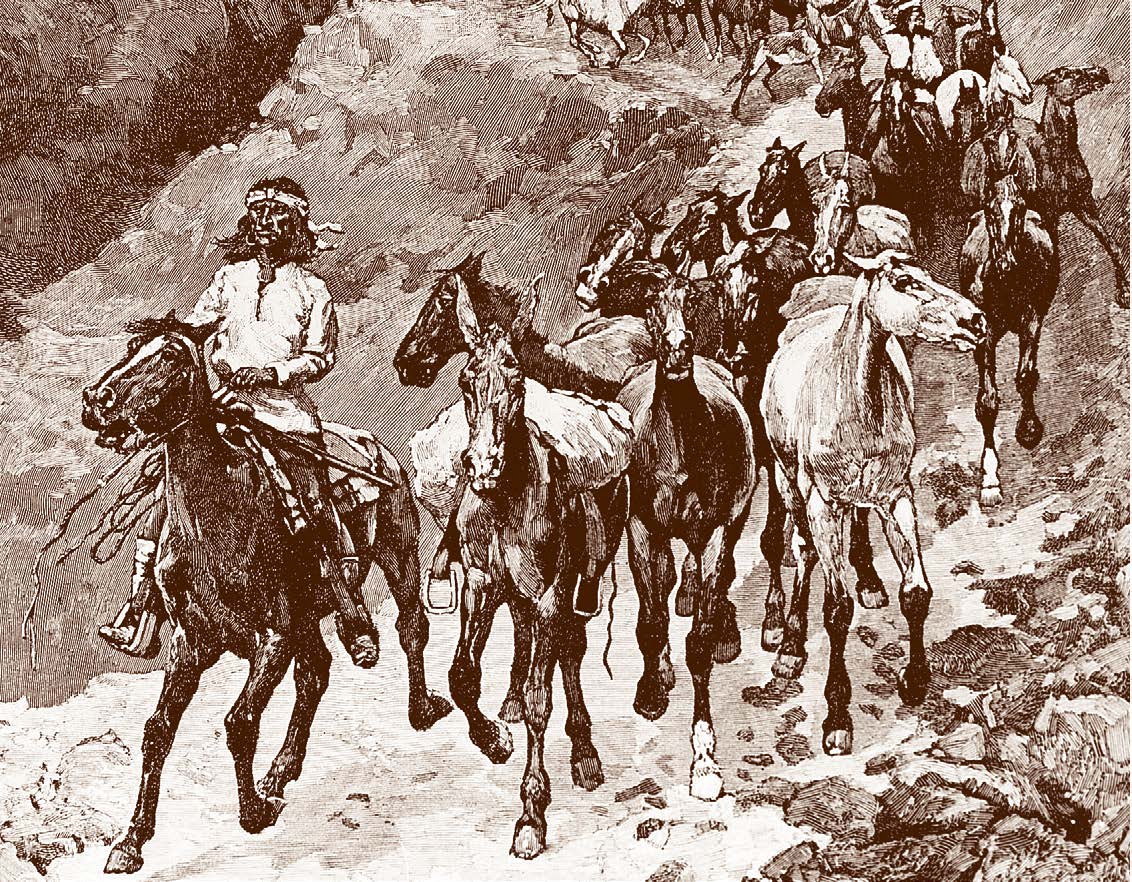
Apaches became the most skillful raiders in the history of North America. No one knew when or where they would strike, and catching them was nearly impossible.
Raiding was so successful that the Apaches had very little reason to attempt to become farmers or ranchers. Even by the late 1800s, the United States had trouble convincing the Apaches to farm or ranch.
HOSTILITIES BETWEEN APACHES AND AMERICANS
CHAPTER 5
In 1848, the United States won a war with Mexico, claiming much of the Apache homeland, including Arizona and New Mexico, which previously belonged to its southern neighbor. Americans began pouring into the region, causing problems for the Apaches because the Americans had little respect for Apache rights to the land.
Over the next 40 years, the Apache groups were rounded up and forced onto . Many Apaches, such as the warrior Geronimo, fought against U.S. government troops in defense of their homelands. By the 1880s, however, only some Western Apaches remained outside the reservation system. Even those Apaches confined to reservations often left to wage war in protest over the overcrowding, sickness, and poor food on the reservations.
Finally, in 1886, Geronimo and his small band of followers became the last Apaches to surrender. They were sent to Florida as prisoners of war. Open between Apaches and Americans came to an end, and the reservation era began.
Next page

